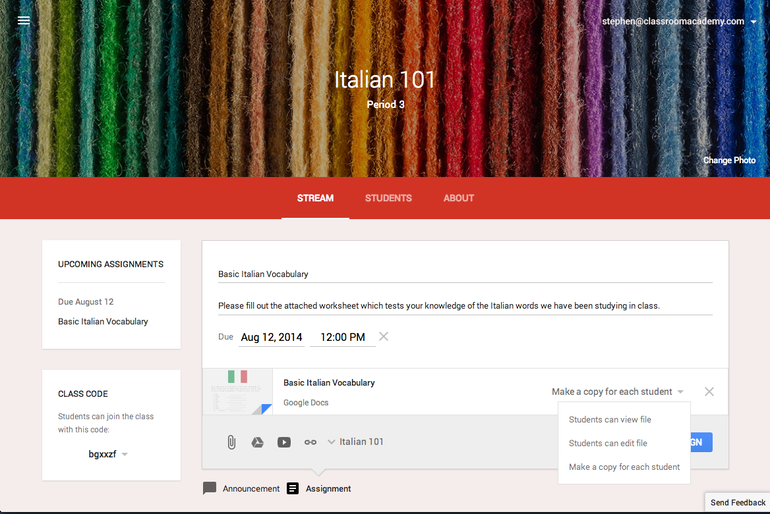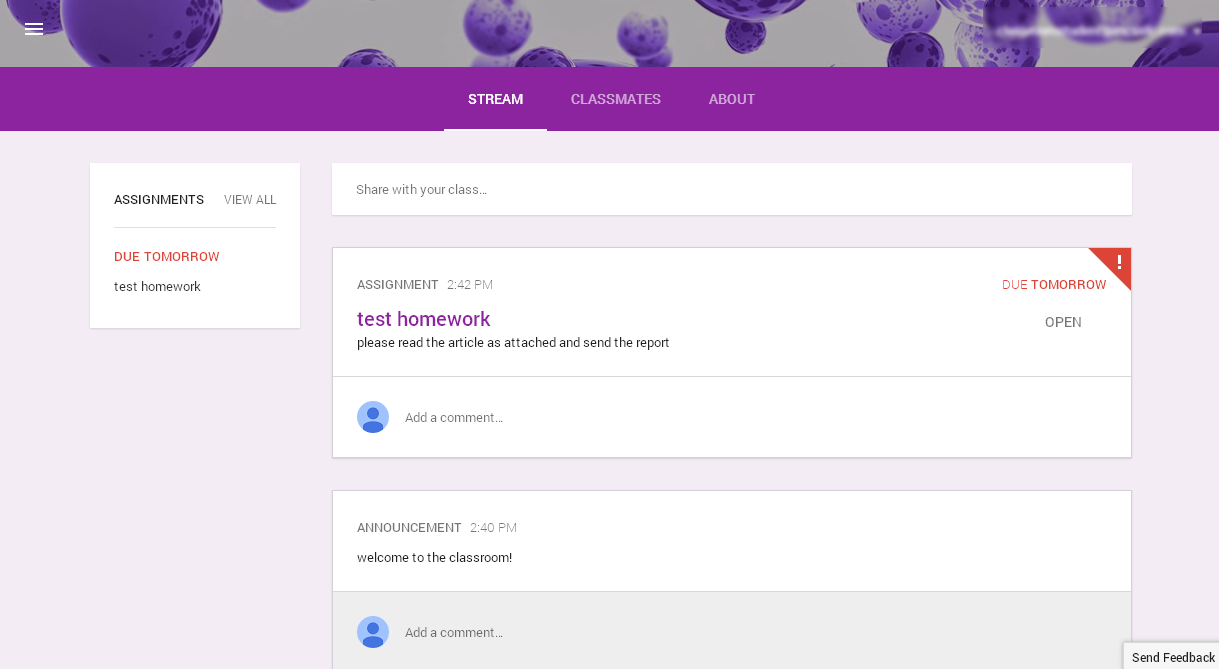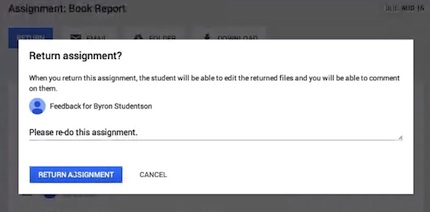backbends 1 from Melissa Tung on Vimeo.
Friday, October 31, 2014
Interview with Yoga Instructor Melissa Tung
Photo permission granted by Melissa Tung
Dr. Will: What does yoga mean to you? What originally drew you to yoga?
Melissa: Yoga is balance. It can be finding balance to your crazy stressed out life, balance to the sedentary work positions we’re in all day, or balance for the vigorous gym/sport activities we do.
I started yoga in 2004 as a way to get physical exercise into my life. Before that I didn't do any kind of exercise and was really intimidated by sports and the gym. Yoga offered a really supportive environment, a group energy but a self practice.
Dr. Will: On your site you say that you "coach your journey and invite you to discover more of yourself". Would you say that yoga is a "spiritual or empowering experience? If so, how?
Melissa: Yoga is definitely empowering as it’s study of Self. When you learn more about your body, your habits, your mental state, you gain the ability to change and shape it. Yoga is NOT a religion and not necessarily spiritual. It certainly can be deep and powerful experience when the mind and body start to connect.
Photo permission granted by Melissa Tung
Dr. Will: Please describe a few of the different yoga practices, their benefits, and whether they are ideal for a particular individual or body type?
Melissa: Yoga can range from strength and core focus like a Power class, to fluid and breathe centered in Vinyasa/Flow, slow and intense like Yin or relaxed and calming in Restorative. So often people will try a class, not know what kind they did, and assume all yoga classes are the same. Even within a type, classes will again largely vary based on the instructor by how and what they lead.
In terms of what type for who, it comes down to goals/needs. The best thing to do is talk to an advisor at the studio and tell them what you’re looking for, as well as what you respond to (do you want to be pushed or soothed?). How active you are outside of yoga can influence this choice as well.
Photo permission granted by Melissa Tung
Dr. Will: Which practices do you teach? Which is your favorite and why?
Melissa: I teach many styles and often hybrids of styles depending on my audience and what’s needed. I trained in Ashtanga Vinyasa so it’s dear to me. I enjoy creating flows and sequences that progress to demonstrate pose relationships, body mechanics or just fun ways to move. I also teach Hot Yoga, Hatha, and occasionally Yin.
Dr. Will: What can your students expect from you? What are your sessions like?
Melissa: A powerful, flowing class with plenty of alignment cues and a relaxed fun atmosphere. I try to express a passionate energy that encourages students to open themselves to push their limits. My goal is for people to leave the class having been challenged and hopefully having learned or tried something new.
Photo permission granted by Melissa Tung
Dr. Will: Speaking of expectations, when considering to practice yoga, which qualities should someone look for in a yoga teacher?
Melissa: Look for someone you connect with. You enjoy their classes, their music preferences, their voice/style etc. Hopefully it’s someone you find approachable and knowledgeable too. Try different teachers (like you would yoga styles) to know first hand what you want. Our assumptions are not always correct
Dr. Will: As a yoga teacher, how are you using social media to reach out to people?
Melissa: I have a website as a central hub for my social media and most importantly, my contact and schedule. I’m on Facebook, Twitter, LinkedIn, Vimeo and most recently Instagram.
Instagram has been great for connecting with others from around the world and motivated me to do more in order to post often. My students will get a sneak peek of what I might teach in class and it offers them a gallery of stuff they can request to try in class.
I’ve had strangers see a photo and do their version of a pose then tag me which is great. All the time there are monthly Instagram yoga challenges or games where you tag people to participate, those are fun and help create community.
On my feed @melissatungyoga, I do instructional posts so people can learn or get information. It’s all my voice so you get an idea of how I cue… I’d love to meet social media friends in class one day!
backbends 1 from Melissa Tung on Vimeo.
backbends 1 from Melissa Tung on Vimeo.
About Melissa: Melissa Tung teaches yoga in Toronto, Ontario, Canada. Join her public classes at YYoga, YogaBe and Equinox. In the summer she teaches in the park and on the lake (paddleboard yoga!) Connect with her at www.melissatung.com
Sunday, October 19, 2014
Why Google Classroom?
By Dr. Will









Photo Credit: edudemic.com
When it comes to digital learning, there are a lot of tools and applications to choose from. Which ones you choose to use should really be about what works best for your instructional needs, over the loyalty to a particular brand. That said, it is no secret how much I love Google Apps for Education. In fact, my edtech motto is “Go Google or go home”. However, as a district instructional technologist, I must be diligent and unbiased in what I recommend to teachers and administrators within the school district.
If you are looking for a full-throttle, robust LMS, Google Classroom isn’t the tool for you. It is more of a Content Management System, than a Learning Management System. If you are looking to go paperless or are already using Google Drive in your classroom or are planning to transition into blended learning, then Google Classroom might just be what the Dr. orders. Here are my reasons for implementing Google Classroom:
Easy to Learn: For both teachers and students -
From Compass Learning to ActivInspire to all kinds of web tools, I delivery technology-focused training with teachers of varying interests and abilities on a weekly basis. Some teachers are excited and are fired up, and some just want a chalkboard or an overhead projector. With that in mind, I am always on the look-out for technologies that are easy to learn and that save teachers time, and Google Classroom fits both criteria. There is a far lesser learning curve for teachers with Google Classroom versus Schoology, Edmodo, or Blackboard, which, in my opinion, is essential to teacher buy-in and adoption within the classroom.
In Google Classroom, teachers simply have to click on the + sign to create a class. Once the class is created, teachers can post announcements on the Stream, and can begin creating assignments almost immediately afterwards.
Photo Credit: Jenn Judkins
Creating assignments is as easy as:
Photo Credit: cnet.com
As you can see, the teacher can pull a file from their computer, from their Google Drive, from YouTube or from a link. The teacher can also choose to give a document to students just to view, which could be reading passage, a class syllabus, or a rubric. Further, the teacher can give students a document to work on collaboratively, or simply make a copy for each student to do work independently.
Once teachers create a classroom, a code is generated, and students can use the code to be enrolled into the class. Once there, they can easily see the assignments and the due dates.
Photo Credit: netkilleramerica.blogspot.com
Photo Credit: netkilleramerica.blogspot.com
After completing the assignment, students can either turn in the assignment or mark the assignment as done, a new feature, depending on whether the assignment is graded or not.
Photo Credit: netkilleramerica.blogspot.com
Integrates with Google Drive -
After a class is created, a folder in Google Drive is created for the teacher. Once students are enrolled in a class, they will find a Classroom folder in their Google Drive as well.
Picture of a Classroom folder in a teacher’s Google Drive
Picture from a student’s Google Drive
What this does is make the classwork very easy to locate for both teacher and student, and is ideal for teachers who can create their assignments and the corresponding resources in Drive, and effortlessly assign the work to students via Classroom. What this also means is that teachers and students have access to Classroom on any device that has an internet connection, which makes creating and assigning student work a breeze. In fact, I actually saw a teacher submit assignments to her students during a live demo on Classroom during a conference presentation.
Grading is a snap -
Teachers can give a student a grade, along with a comment, or he or she can return the assignment with instructions for improvement. The teacher can also leave comments inside the actual assignment for students.
To grade an assignment, inside the class, click the assignment in the class Stream. The Student Submissions page is where you find the list of all of the students who have completed the assignment. On the right you will see No Grade by each student’s submitted assignment.
Click No Grade, and change the default value (100) to whatever you want. You will do this by clicking on Points, and typing in the value you want. Please note that you can only choose whole numbers at this point. In addition, you cannot issue a letter grade or type in or select a decimal point, such as .5.
Once you have entered the grade for the student, check the box next to the student’s name, and click Return. A box will pop up. Here, you can add feedback if you want to. Click Return again, and the student will be notified of the graded assignment.
***** If you want the student to revise the assignment, simply don’t assign a grade, and check the box and click Return to return the assignment to the student. Please make sure to leave them feedback as to why the assignment was returned.
Photo Credit: sites.google.com
Photo Credit: campustechnology.com
Ideal for going Paperless -
Kerry Gallagher is a boss at going paperless. She facilitates her classroom using Google Drive, and there are many other teachers who are using Drive to send students a whole host of assignments and resources. But with Google Classroom, teachers can do the same thing in a more cohesive and streamlined manner, and without students having to remember to Make a Copy of the document to avoid editing the original document.
Whenever it warrants, I will be recommending that teachers within my district use Google Classroom. There is one teacher who is piloting Classroom with awesome results. And I have a training scheduled for next week to assist a Language Arts teacher with using Google Classroom as a center and as part of her RTI interventions.
Please leave comments or any recommendations or best practices you have for implementing Google Classroom. To learn more about Google Classroom, please click on the following link.
Saturday, October 11, 2014
Going Google with Google Classroom (GEG Mississippi Event)
This is an event for GEG Mississippi. I talk Google Classroom with Elle Deyamport, Ed.S., Rafranz Davis, and Sarah Thomas. Please leave your comments, and check out this Google Classroom tutorial by Amy Mayer.
Thursday, October 9, 2014
Paperless Love
By Kerry Gallagher, JD and Students
Sure, it’s fun to be known as the paperless teacher. But it is much more important that the choices I make for my classroom help students learn and connect to the content. So, does going paperless really benefit kids?
I sat down with two students who run Rockets Help Desk, a start-up program in our high school that produces tutorials for students to help them better utilize resources available in the school, including technology. Both of them were in my history classes last year and experienced a paperless classroom first hand. Here are the benefits they identified from their student perspectives:
Organization
After learning to organize notes in Evernote and draft work in Google Drive, Julia said, “It is far neater than a bundle of papers that are randomly organized. Even a messy person is forced to be neat. We can either create online folders to store specific things in Google Drive or everything is automatically just categorized by date in Evernote.”
Image B: Tessa, a former student of mine, created this annotated screenshot to show how easy it is to find her notes in Evernote.
Access
Now that she has figured out the benefits of saving everything in the cloud, Megan said, “I can access my notes and class resources from anywhere. I never leave notes as school because they can be accessed on a computer or on my phone. Also notes are always up to date and easy to find.”
Image D: Melanie presented with me at a summer conference and created this slide showing how she can access and work on her essay drafts from different devices.
More Interesting
I know I dreaded textbook assignments when I was in high school. Teenagers have changed a lot since the 90s, but they still don’t find textbooks engaging. Julia said, “Typical textbooks are dry and boring. The way they are written is not interesting enough to remember.”
Megan agreed, “When a teacher goes paperless they are more inclined to look for multimedia sources like videos, websites, or articles written specifically for that topic rather than using a textbook.”
Julia added, “I can absorb the information better because multimedia sources are more entertaining while still being academic.”
Collaboration
Both Megan and Julia talked about how having paperless notes and resources made it easier for them to work in groups with their classmates. Megan mentioned, “Paperless is more collaborative because it is easier to share things digitally as opposed to orally.”
Even student introverts can participate more using paperless collaboration tools like Padlet to post their ideas without having to raise their hands and speak out loud in class.
While there are challenging days in a paperless classroom -- when an app doesn’t work as expected or when our wifi network is slow -- the benefits for long term learning outweigh these potential bumps in the road. I am now a full month into the paperless classroom with a new crop of 9th and 10th graders. At first they were worried, but they are learning to troubleshoot their own tech obstacles and are seeing the way a paperless class actually makes their lives easier.
Some may argue that technology takes away from academics and that teenagers are too hooked on their phone screens. When I was in middle and high school in the 1990s, my friends and I would constantly write and pass notes to one another during class. This did not prompt teachers to stop letting us use pencils and paper as a learning tool. Instead they created new, more engaging lessons, and encouraged us to use the paper and pencils to create worthwhile writing that others might want to read. Similarly, the teenagers in my classroom are not going to stop Snapchatting, but I can show them how to use their phones to save class notes in the cloud, access video and article resources, collaboratively create a multimedia class presentation, and publish all their ideas on public blogs for an outside audience. A paperless classroom might not work for every teacher and every group of students, but the benefits for student learning in my classroom have proved that it is a worthwhile approach.
About the Author: Kerry Gallagher has been teaching middle and high school history in Massachusetts for 12 years. Her classroom is paperless. Students use their own smartphones, tablets, and laptops to access content, collaborate, and create original work. Kerry won the 2014 Yale-Lynn Hall Teacher Action Research Prize for her submission on the use of mobile devices for a paperless public school classroom. She has spoken at conferences like the Blue Ribbon Blueprint for Educational Excellence Conference, MassCUE and the Yale Education Leadership Conference. In addition to teaching history, Kerry is the Mock Trial Team coach and a licensed attorney. Most recently she founded the Rockets Help Desk, a student-run group that produces tutorials to help students and teachers access technology and other resources at their school. Read more of Kerry’s lessons and teaching strategies at her blog Teaching HistoryTech and follow her on Twitter @KerryHawk02.
Befriending Your Self-Talk for Good
By Sherri Spelic - Leadership Coach
Once upon a time as a competitive runner and student of sport psychology, I invested a substantial amount of energy in trying to both understand and harness the power of my internal dialogue. Unfortunately, I had my work cut out for me as my natural tendency was to dwell on the negative aspects of my performance and occasionally sabotage my best efforts in the process. However, changing my habits proved to be a both challenging and rewarding experience. I no longer compete on the track, yet the lessons learned there have given me a much stronger sense of self, purpose and potential than I ever imagined possible.
Self-talk describes the internal dialogues we regularly hold with ourselves. It’s “the little voice” or “that whisper” in our ears that can convey a host of emotional reactions to the situations we face. What’s interesting about self-talk is that it can run fully of its own accord and it can also be consciously moderated through awareness and cognitive training. We can choose how we put our self-talk to use. As an athlete I had the tendency to disparage my performances both in training and before competing. Over time, I learned to moderate my internal dialogue more effectively and yes, my performances became more consistent, but more importantly, I became a happier and more satisfied competitor.
Many articles on self-talk advise you how to avoid or reduce negative examples. I want to take a different tack. In thinking about using self-talk productively, I want to suggest highlighting the positives and celebrating the aspects of your performance that are working well. There are a couple of reasons for this. For one, it is an easier task for the mind to add a new habit than to break an old one. Second, developing a habit of recognizing and acknowledging what is working well primes our whole internal system – mind, body, and soul – to be on the lookout for these instances. We create a positive feedback loop which the system seeks to repeat.
In considering your teaching or other area of performance, what are your self-talk habits? How does that whisper sound in your ear? Are you dealing with an ally or an enemy? And under which circumstances? Our self-talk tends to be situationally charged meaning that in areas where we feel confident, our self-talk is more likely to confirm that feeling. Whereas if we are feeling ill-equipped, depending on where we stand with that little voice, we may hear encouragement or messages which diminish our sense of control.
That said, here are a few tips for harnessing your self-talk to be and do your best:
- Listen in. Spend some time each day simply tuning in to that inner frequency. Which messages are strongest? How are you responding?
- Write down a list of as many of your personal and professional strengths as you can think of – leave no stone unturned. The purpose here is to kick start your mind into remembering and acknowledging what you are on the lookout for. Big stuff and little stuff, all strengths count and will make a difference in creating that positive feedback loop.
- Catch yourself being good. Ask yourself in the middle of the day and also at the end: where was I good today? What did I do especially well?
- Create a script for yourself. Facing a difficult conversation or situation? Consider writing out what you want to say in the best case scenario. This is a way of priming your system for the best possible through conscious practice. In this way, you program your self-talk to produce the messages that will help in that situation.
- Assist others in monitoring and brightening their self-talk. Although you can’t actively hear someone else’s self-talk, through careful observation, it’s possible to infer how someone’s self-talk is working for or against them. Particularly in the classroom, simply raising the question with a student about what messages they may be playing in their heads can be a great springboard for useful conversation about self-talk. Awareness of others can also enhance our capacity for inner reflection.
These are starting points for making friends with your self-talk. Please let us know what worked for you.
About the Author: Sherri Spelic is a leadership coach and educator based in Vienna, Austria. Two decades of teaching elementary physical education and coaching track have strengthened her conviction that mind-body connections form the foundation for all successful learning. Check out her blog: http://edifiedlistener.
Subscribe to:
Posts (Atom)













.jpg)
